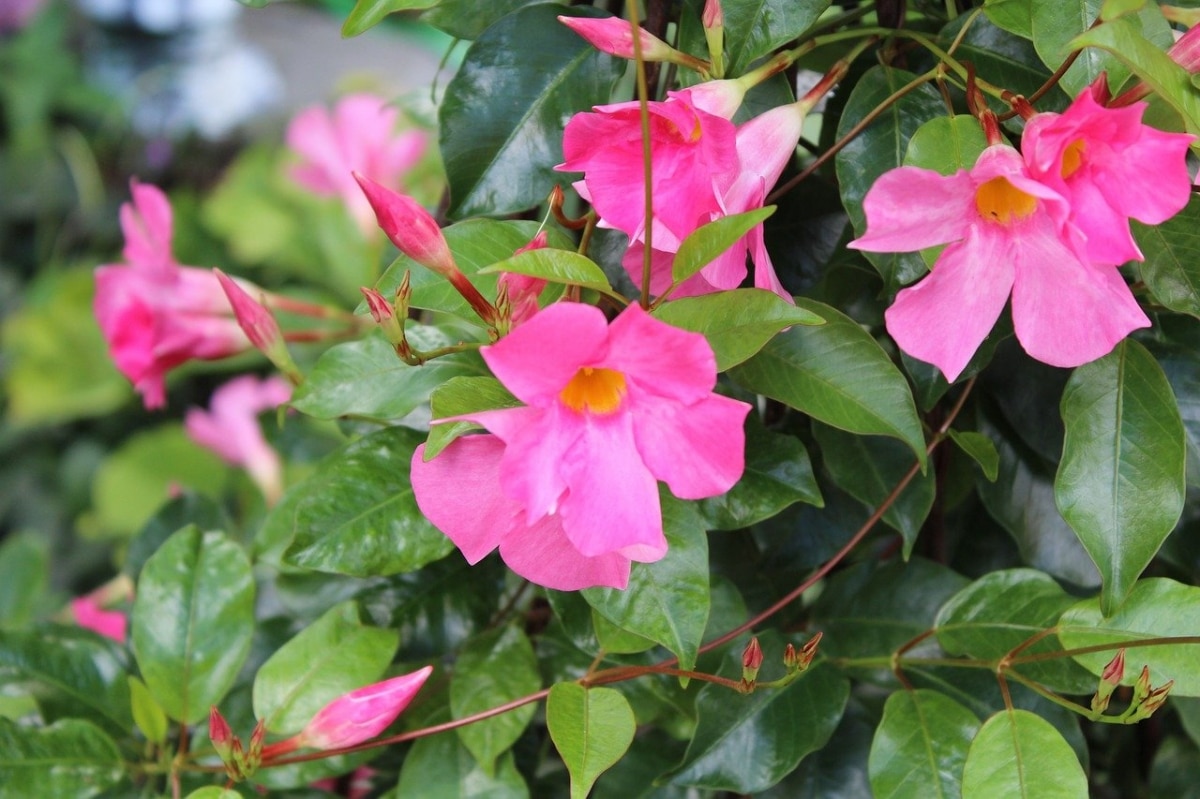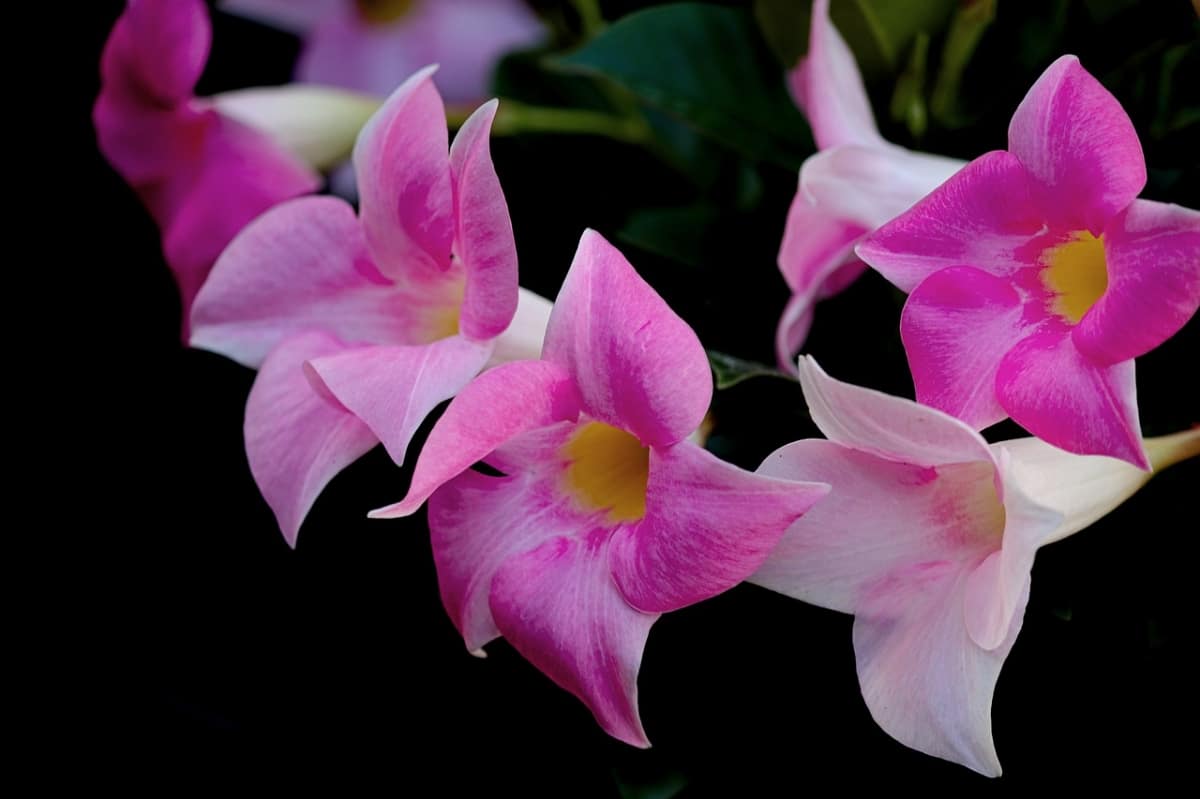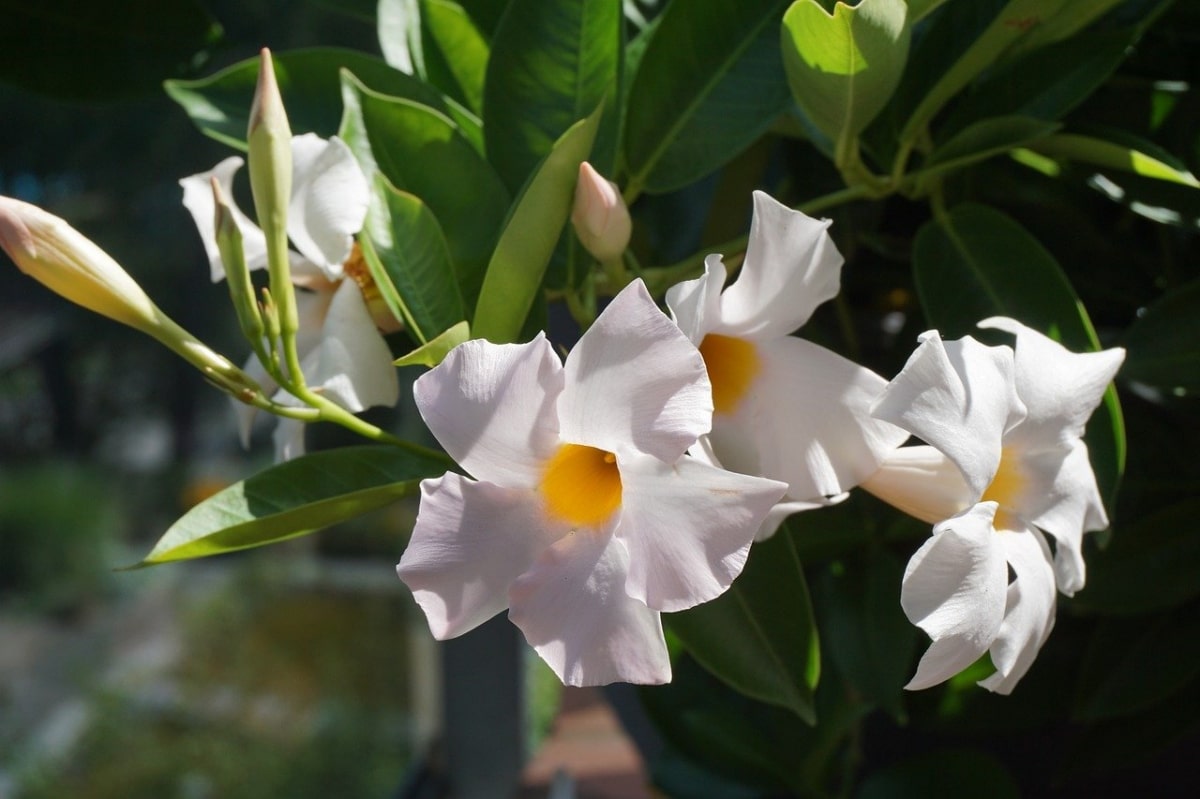
Dipladenia is a plant that is widely grown, both indoors and in patios and gardens. It can grow fast, but without a doubt what attracts us most about it are its beautiful bell-shaped flowers. Therefore, when we see that he has an illness, we worry.
Now, you should know that, in general, it is much more resistant than other climbers. Even so, it is important to know what the dipladenia diseases are and how to treat them.
Why sick?

The first thing to be clear about is that the dipladenia It is not a plant vulnerable to diseases, but when the growing conditions or the care given to it are not adequate, then it can be the case that microorganisms, such as fungi, bacteria and viruses, harm it.

So you have to know first what promotes infection In order to avoid it as much as possible:
- Excess irrigation: when we water too often, without letting the soil dry out a bit, the roots run out of air, since the oxygen molecules simply disappear as more and more water is added.
- Lack of irrigation: although it is difficult for a fungus, bacteria and/or virus to infect it when it is thirsty, we must bear in mind that there are some pests, such as whiteflies or mealybugs, that are attracted to weak plants and that can stimulate the appearance of the black fungus. This fungus covers the leaves with a blackish layer, preventing them from breathing.
- Excess humidity (indoors): We are not talking about watering too much, but that inside the house there is a very high ambient humidity and mild temperatures during the winter. These conditions are ideal for fungi, such as botrytis.
- Plant it in a compact and heavy soil: land that does not drain water well only causes problems for a wide variety of plants, such as dipladenia, since the roots not only cannot grow well, but also remain wet for a long time, with the consequent risk of rot.
- Bad habits: planting the dipladenia in a pot without holes, or putting a plate under the container without draining it after each watering, is not a good thing. The water remains stagnant and the roots die. Likewise, if we use an 'old' growing medium, that is, one that has been used to plant other plants, we run the risk of making dipladenia sick, since there may be spores of fungi, bacteria and/or viruses in it.
What are the diseases you can have?
Now that we know what the causes are, let's see what are the diseases that can affect you:
Soil fungi

Image – Wikimedia/Mary Ann Hansen
The mushrooms and oomycetes Pathogens, such as Phytophthora or Pythium, Rhizoctonia, or Sclerotium, are microorganisms that attack roots. They are favored by soils that are always humid (not flooded but almost) and mild temperatures, 15ºC or more.. Therefore, the symptoms will not be seen with the naked eye as the roots are inside the pot and growing in the soil, but we can intuit, or at least suspect, that something is wrong with our dipladenia if we see the following:
- The soil is not only very wet, but white mold begins to grow.
- The stem or trunk begins to look bad: it may look brown, blackish, moldy and may even have 'thinned out'.
- The leaves begin to be bad, with brown spots.
To do? In these cases, irrigation should be suspended, change the substrate if it is in a pot, and apply fungicide that contains copper (as this, which you have to dilute in 15 liters of water) as soon as possible.
Leaf and flower fungi
There are other fungi that affect more the aerial part of the plants, that is, the leaves, flowers and fruits. If I'm honest, I haven't seen any dipladenia infected by them, but that doesn't mean she can't be. And if, for example, we spray it with water daily without knowing that the environmental humidity is very high and therefore it does not need these sprays, we favor the appearance of these microorganisms, such as botrytis, rust, mildew and/or powdery mildew.
Symptoms are easy to see as they appear on leaves, flowers and/or stems. Are these:
- White or grayish mold in some of those parts
- Leaves with brown spots
- Appearance of rounded red or orange spots on the leaves (rust)
To do? In these cases, it is best to prune the affected parts with previously disinfected scissors, and apply polyvalent fungicide as No products found., which is now ready to use.
Bacteria
It is extremely rare for a dipladenia to get sick from bacteria, but it is not impossible. In fact, a study, he discovered that the species that causes tuberculosis of oleander in nerium oleander, Pseudomonas savastoni, has evolved to originate a new variety, Pseudomonas savastoni p.v. mandevillae pv. Nov. And it causes these symptoms:
- Necrotic spots on leaves and stems
- leaves with bumps
To do? The only thing that can be done is remove affected parts. The best treatment is prevention, and this is achieved by buying healthy plants and ensuring that they do not lack anything.
Virus

Something happens with viruses, it seems that with bacteria: only one is known to affect dipladenia. It is one that in English is known as Dipladenia mosaic virus (DipMV), and that translated into Spanish would be something like the dipladenia mosaic virus. East it can be transmitted by some pest, or it can enter through a micro cut caused, for example, by pruning carried out with contaminated tools.
The symptoms are, as the name suggests, appearance of mosaics on the leaves of green, white or even yellowish color. Unfortunately, there is no treatment, just remove the affected parts, take good care of the plant, and wait.
As you can see, there are several diseases that dipladenia can have. Luckily, by keeping it well hydrated and well fertilized, you can greatly reduce the risk of it becoming weak and vulnerable to infection.